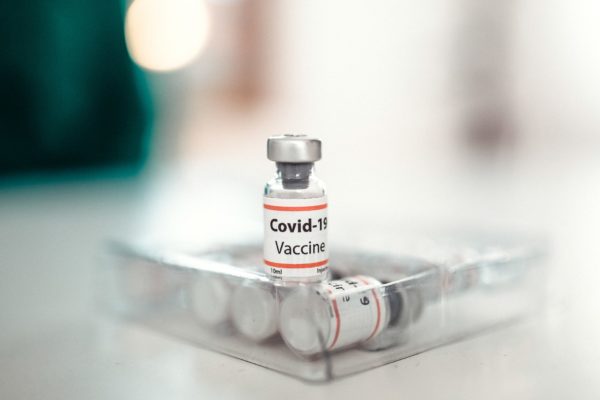
Convalescent plasma (CP) from blood donors with antibodies to severe acute respiratory syndrome coronavirus 2 (SARS-CoV-2) may benefit patients with COVID-19 by providing immediate passive immunity via transfusion or by being used to manufacture hyperimmune immunoglobulin preparations.
Convalescent plasma (CP) is collected from donors who have recovered from an infection and whose plasma contains antibodies against the agent of interest.1-3 CP has been used with variable success in a range of infectious diseases, including severe acute respiratory syndrome (SARS) caused by SARS-CoV-1 and Ebola, although evidence supporting its efficacy remains limited.4-6 Where CP is of benefit, a major part of its effect is likely through the action of donor neutralizing antibodies (NAbs) against virus in the recipient.3,7 In the study by Wood, et al., they provide an overview of current knowledge regarding the efficacy and safety of CP for SARS-CoV-2 infection, and considerations for future studies.8
Results from randomized trials are starting to appear. In total, 12 RCTs have been reported. However, only 6 of these reports are peer-reviewed literature and 4 were terminated early (mostly due to falling local case numbers).9-14 Results are comprehensively shown in a table in the article. Only 1 small trial showed a benefit from CP on a range of outcomes, including time to clinical recovery, progression to severe disease, and reduced mortality (4.8% vs. 28% in control group, p=0.03). 15 Others reported only benefits in secondary outcomes (e.g. viral clearance). Two open-label RCTs are in preprint. The first is by Gharbharan et al in the Netherlands. They enrolled 86 of a planned 426 participants, but the study closed early, in part due to the observation that 79% of patients had NAb titers comparable with those of the CP donors. There were no differences in mortality, length of hospital stay, or disease severity at day 15, but the study was underpowered. No plasma-related SAEs were reported.16 Avendano-Sola, et al from Spain reported on an RCT that terminated after enrolling 81 of a planned 278 participants with no significant difference in their primary or secondary outcomes.17 No confirmed plasma-related SAEs were described. In the past month, three large RCTs of CP have issued public statements announcing cessation of recruitment to CP interventions based on reaching pre-specified end points of futility following analysis of available data (REMAP-CAP, RECOVERY and CONCOR-1). Another smaller trial (n=160) of very early treatment with high-titer plasma showed potential benefit, with a reduction in the progression to severe disease of approximately 50%.18 This, and other trial evidence has prompted the FDA to update its Emergency Use Authorization for convalescent plasma, so that only high titer plasma should be issued.19
Unfortunately, key characteristics and eligibility criteria vary greatly between studies while this should be a high priority.7 Together with harmonization of approaches in elements of study design and management this will greatly assist in the interpretation of results. Important findings to consider are; what is the role of insufficient antibody titer levels or testing, is there an effect of the many patients already having anti–SARS-CoV-2 antibodies at study entry, is there a role IgG-affinity maturation and what is the part that neutralizing auto-antibodies play.20,21
Safety wise transfusions are associated with known hazards, including allergic reactions ranging from trivial to life-threatening anaphylaxis.7,22,23 CP-specific concerns include antibody-dependent enhancement of infection and potential transmissibility by transfusion.22,23 SARS-CoV-2 RNA has been detected in blood donations, but so far there is no evidence it is transmitted by transfusion.24 Treatment of CP with pathogen reduction technologies may further minimize this risk.1,23 Published preliminary safety data have not identified any new early plasma-related SAEs or worsening of COVID-19 illness following receipt of CP, although comparative data are lacking. This is reassuring, but more information is certainly required and other unforeseen hazards may exist.
If the main mechanism of CP action is mediated through viral neutralization, earlier administration, including pre-hospital or as prophylaxis, may be of benefit, and several trials are underway to assess this. There may also be specific patient groups who are more likely to benefit, including patients with inherited or acquired immunodeficiencies.25 The role of CP among other antibody therapies remains to be defined as well. Some examples of other potential therapies are; hyperimmune globulin preparations, monoclonal antibodies and polyclonal immunoglobulins for IV (IVIG) is already being used in the treatment of COVID-19, although evidence of benefit is limited.26,27 A high priority for the future should be opening and completing high-quality trials faster and more focus on multi-interventional platform trials with international collaboration. The same accounts for standardized protocols of novel therapies. And last but not least, we should not forget to focus on the safety and logistical challenges on blood services and donors side.
To conclude, CP may be of benefit for patients with COVID-19, but optimal product characteristics, transfusion volume, and administration timing remain to be determined. Preliminary COVID-19 CP safety data are encouraging but establishing the clinical efficacy of CP requires an ongoing international collaborative effort. For now, the transfusion should not be given at all.
References